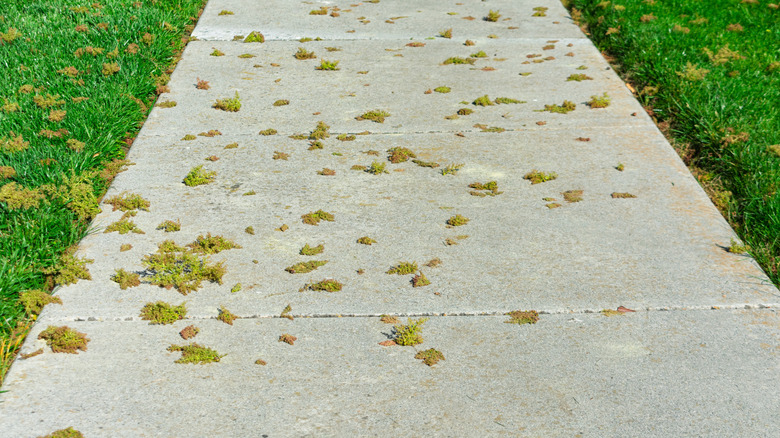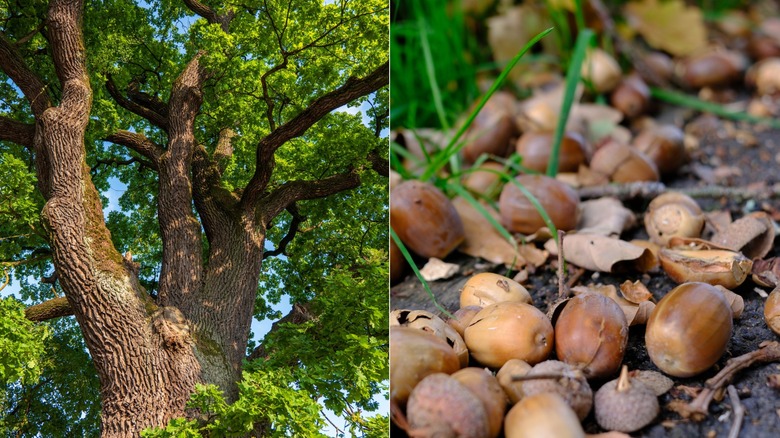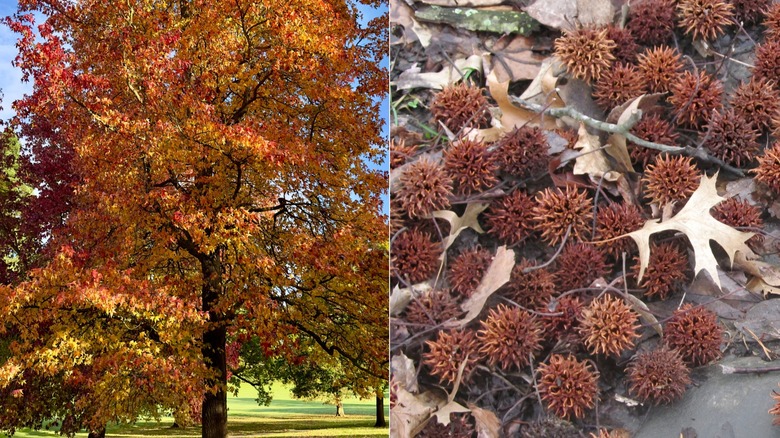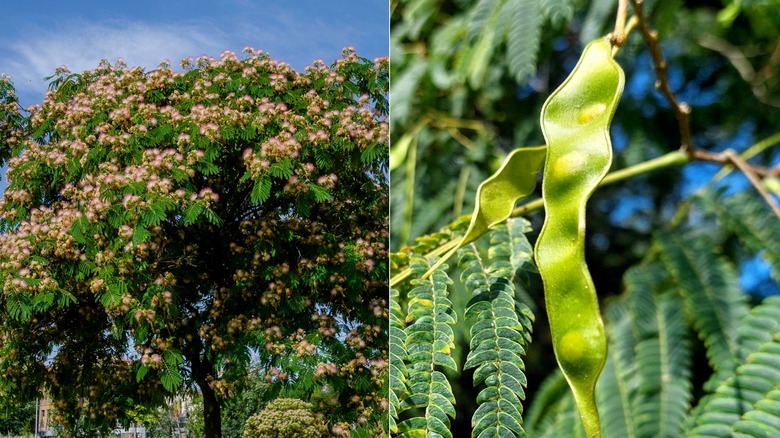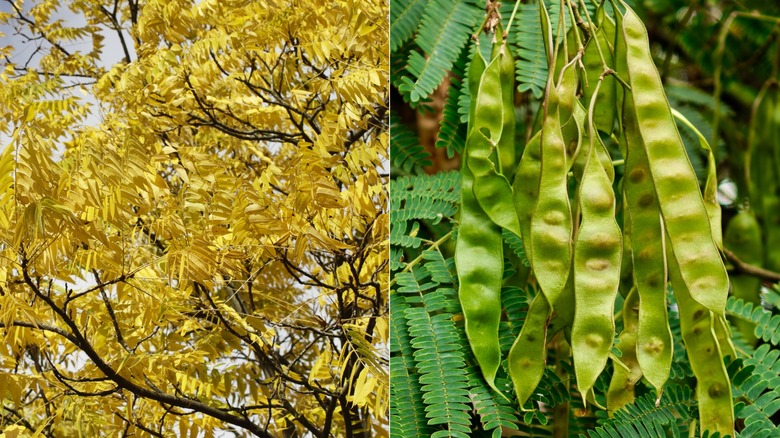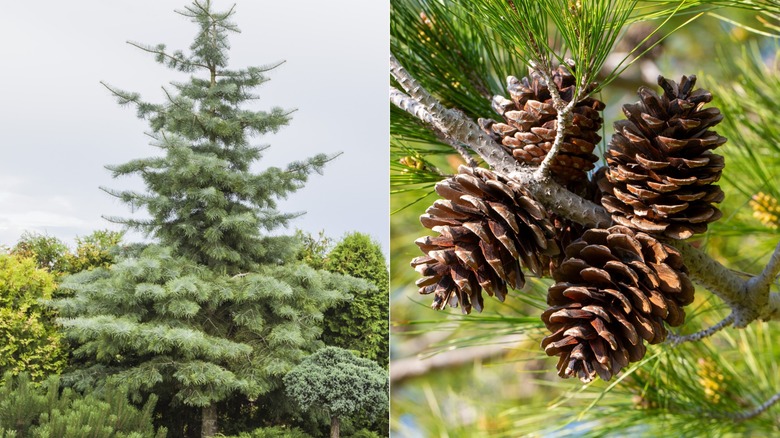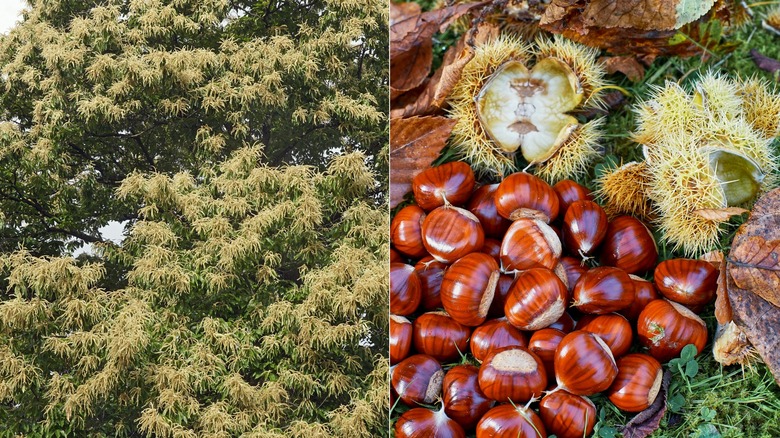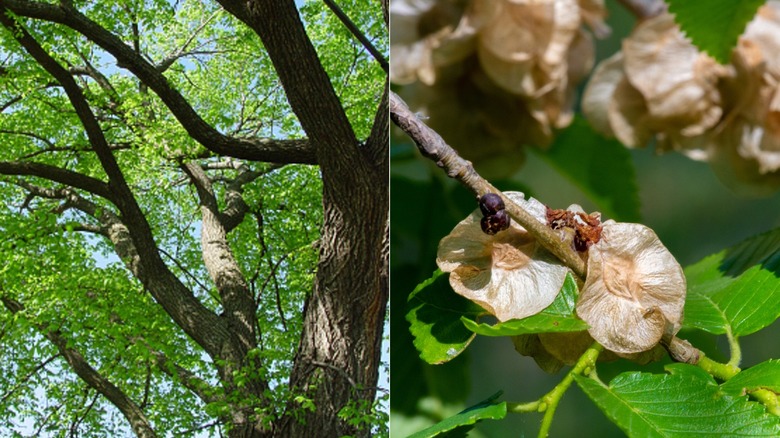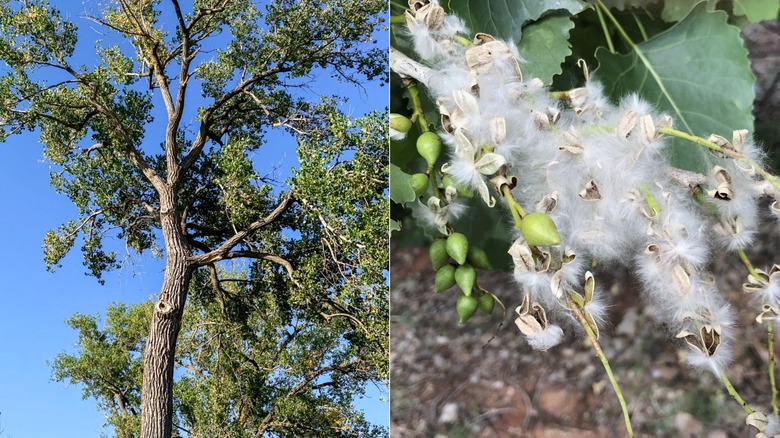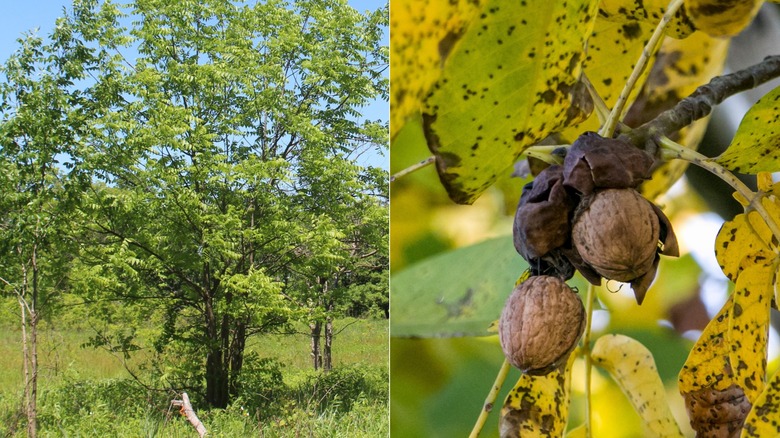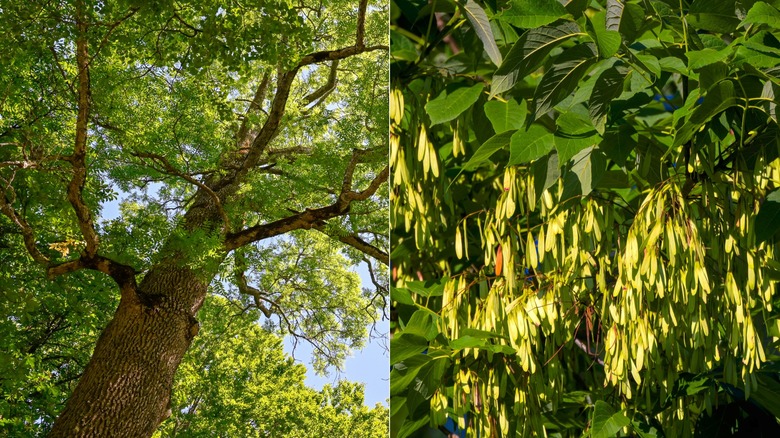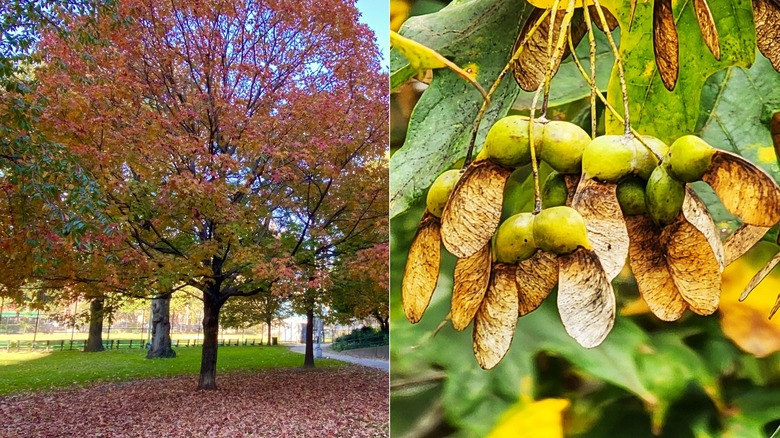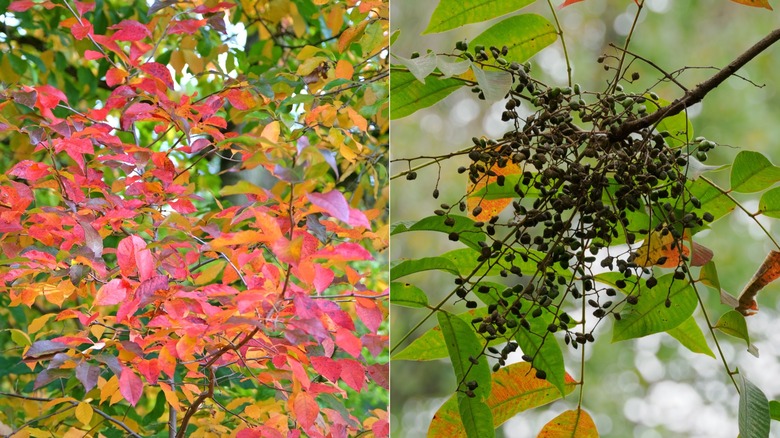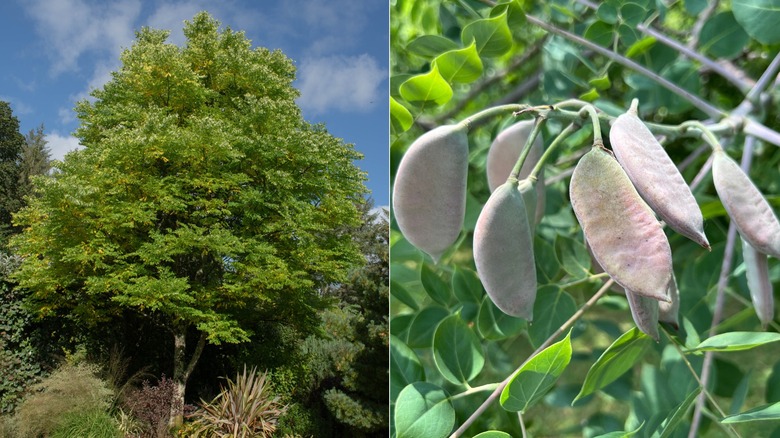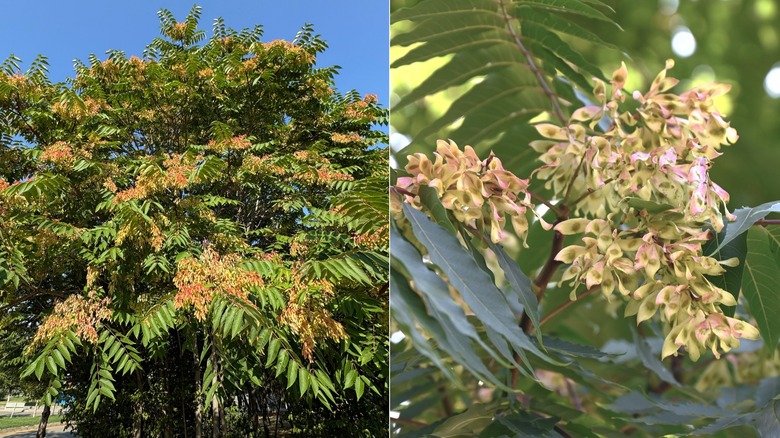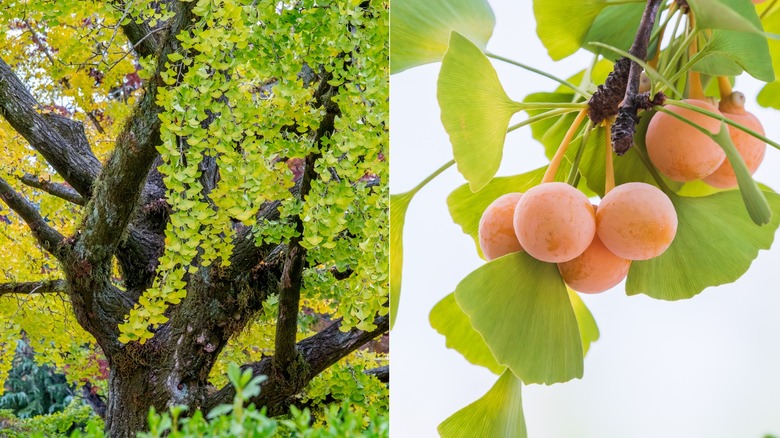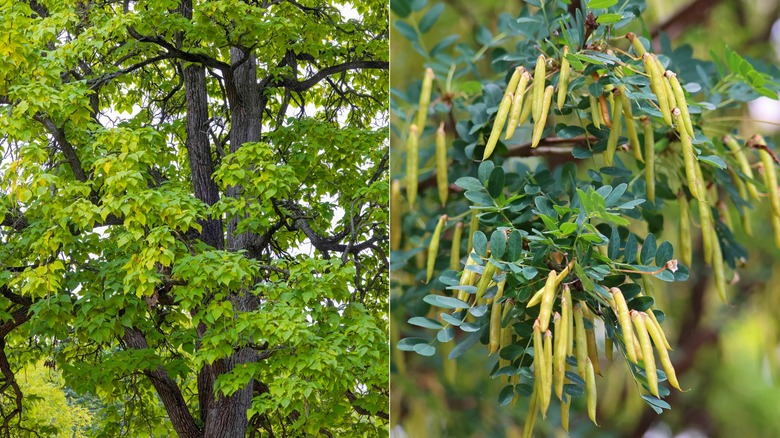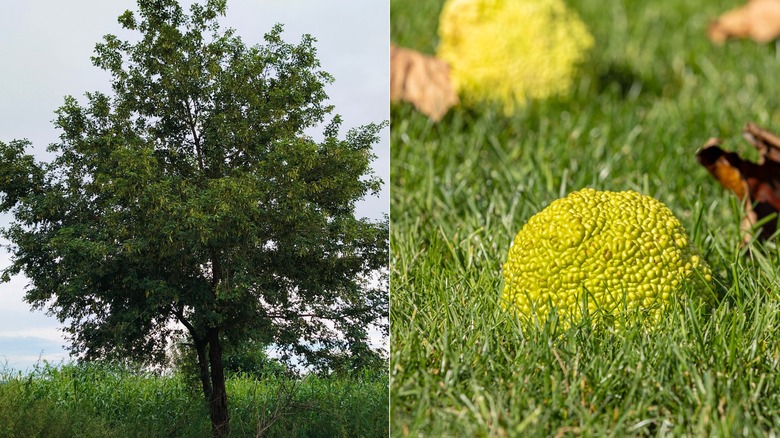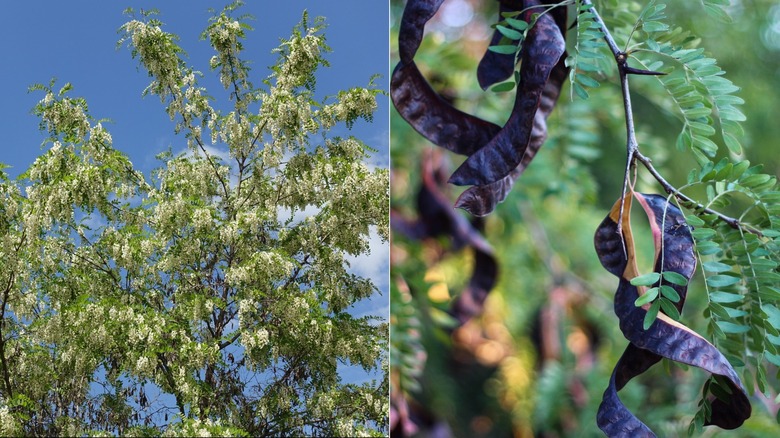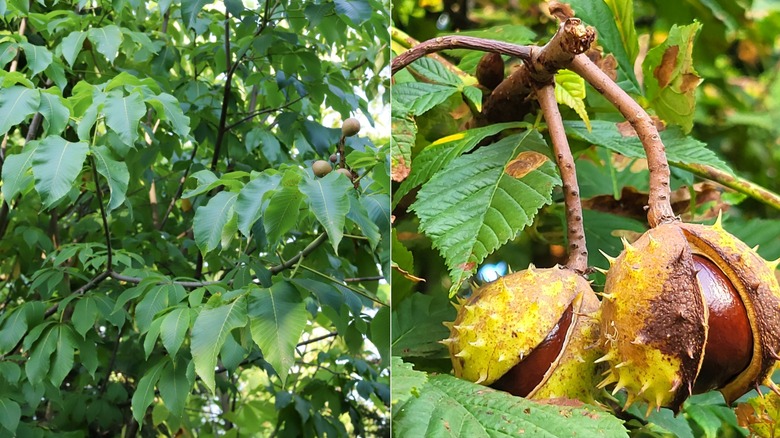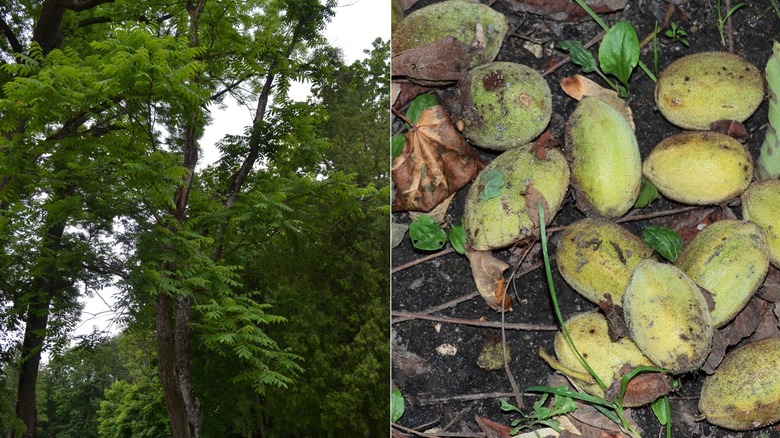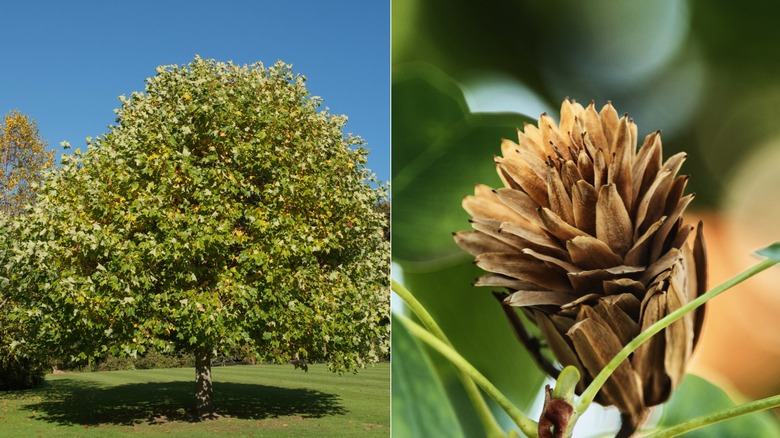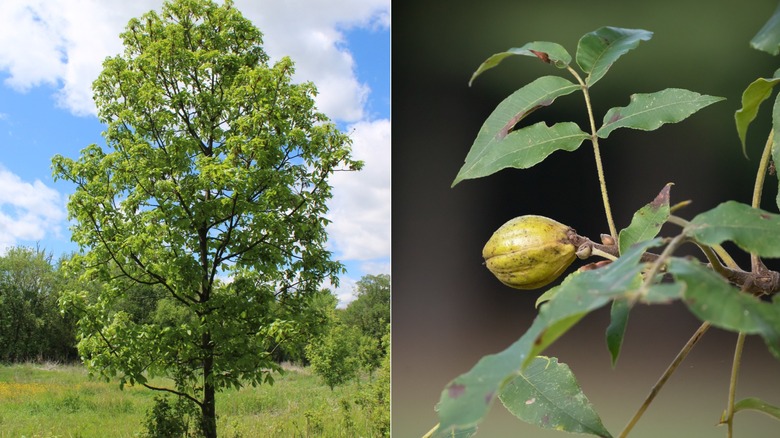What Type Of Tree Is Dropping All Those Seeds In Your Yard
You may have noticed an uptick in falling seeds from your trees this year, and that's no coincidence. While it feels like trees endlessly shed their seed pods and clusters as months go on, arborists are actually marking 2025 a "mast year." Mast years describe a year in a tree's lifecycle during which the tree will drop an abundance of seeds as a part of a survival strategy to reproduce, which is why your oak tree is shooting you with so many more acorns than usual. According to master arborist, Luke Brunner, in an interview with Fox 2 Detroit, "they're trying to out-compete wildlife to regenerate themselves."
What makes those majestic towering trees in your yard so beautiful to look at — the grand canopies they form with their branches and leaves — is actually the source of one of the biggest yard maintenance headaches: the hundreds of seed pods falling onto the ground, mast year or not. But, for many, yard clean up is well worth the price to pay to experience the shade created by these gorgeous, mature trees. No matter your view on yard work, understanding which types of seeds which trees will drop can help in the clean up process. Whether it's keeping an eye out for seed pods to properly dispose of from invasive species like the Mimosa Tree (Albizia julibrissin) or spotting seed pods that are lightweight enough to easily clean up with a shop vacuum, you can expect these trees to decorate your yard with their pods, clumps, and helicopters throughout the seasons.
Oak trees
Among the biggest culprits of the mast year, members of the oak tree family (Quercus ) are large deciduous trees from which copious piles of acorns come from during the fall months. Acorns can get up to an inch in length, and if they gather in abundance they can prove detrimental to lawns (potentially choking grass) and pets (toxic when ingested in large quantities). Cleaning up acorns is a chore, as vacuums aren't able to pick these sizable seeds up, but gathering with a lawn sweeper and collecting and transporting with a tarp can make the task tolerable.
American sweet gum trees
American sweetgum trees (Limquidambar styraciflua) are known for their storybook, star-shaped leaves that change color in the fall. They're a common sight in USDA Hardiness Zones 5 to 9, but their spiky seed pods are notoriously difficult to wrangle. Like acorns, these seedy projectiles fall in the autumn, but they also drop going into the winter, extending the clean up season. A clever way to reuse sweet gum seed pods in your yard, however, includes breaking the seed pods for mulch. It adds a pop of rich color, and it's repurposed from the yard!
Mimosa trees
Mimosa trees (Albizia julibrissin), while visually-appealing with pink, feathery blooms, are invasive in parts of the U.S. due to their quick, aggressive growth. Proliferating through large quantities of seed pods dropped into your yard throughout the late summer and fall, these seeds germinate rather quickly and outcompete native species. To help control growth, it's best to regularly collect and dispose of the seed pods before they dry and open. Rake them up and seal them in trash bags for disposal. Avoid composting, as seeds can survive and sprout later.
Honey locust trees
Another common tree with falling seed pods is the honey locust (Gleditsia triacanthos), popular for its distinctive golden leaves in autumn. Unlike the mimosa tree, which is non-native, the honey locust is native to central and eastern North America, but it produces similar long, twisted pods that drop in the fall. These particular tree pods, however, contain a sweet, edible pulp (hence "honey" in the name). While a delicious snack for wildlife and humans, honey locusts can also attract pests if not regularly cleaned up, so be diligent about removal, even though it's not an aggressive spreader.
Pine trees
There are several varieties of pine trees (Pinus spp.) that drop numbers of cones throughout the fall. These cones house the tree's seeds, and when dry, open and release the seeds to scatter. Some kinds of pine trees, like the Jeffrey pine (Pinus jeffreyi) and Coulter pine (Pinus coulteri), have cones that are so large they can reach over a foot in length! Pine trees are also known to shed some of their needles in the fall as well, making clean up a chore. On the bright side, pine cones make for great mulch material and fire starters.
Chestnut trees
While today there are nine species of chestnut tree found in North America, in the 19th century, the American chestnut (Castanea dentata) was effectively eliminated due to a terrible blight that wiped out the species. But with the introduction of blight resistant species, you'll find that your chestnut trees — likely the Chinese chestnut (Castanea mollissima) — will produce large, spiky burrs which drop and split open in the fall to release shiny brown nuts. These dropped seeds are a favorite food for wildlife, but you can harvest them for a snack too!
American elm trees
Elm trees (Ulmus americana) are springtime seed droppers, producing teardrop-shaped, tissue papery samaras that float gently to the ground. Samaras — tree fruits carried in light pods that spin and spread in a helicopter movement — often smother walkways and lawns during peak dropping times. Though these pods feel and look light, the sheer volume of what elms can drop can get overwhelming, making this springtime task feel like a prelude to autumn leaf clean up. Luckily, because of how light they are, you can vacuum or rake up elm seed pods.
Eastern cottonwood trees
In late spring to early summer, eastern cottonwood trees (Populus deltoides) release tufts of what look like cotton balls, showering your yard in a layer of airy, white fluff. These seeds are attached to fibers that allow them to latch on to materials — while they can travel long distances on the wind, they can settle easily across yards, streets, and waterways. While the sight can look magical and straight out of a fairy tale, their accumulation can pose a fire threat as cottonwood seeds are flammable. Removal with fine-tined rakes, particularly in fire-prone locales, is strongly recommended.
Black walnut trees
Black walnut trees (Juglans nigra) flower in the late spring and early summer, then drop large, green-husked fruits in the fall. These seed pods contain hard walnuts inside, and they can pack a mean punch (literally) for anyone standing beneath the canopy. While clean up can be fun, since you can harvest walnuts, these trees may shed unworthy fruit, meaning not everything on the ground is good. To top it all off, the hulls can stain surfaces badly, so clean up is crucial.
Ash trees
Ash trees (Fraxinus americana) drop papery samaras like elms, and require diligent removal as these helicopter-like pods build up quickly and even sprout in garden beds if not cleared away in a timely manner. To remove these pods, rake them up or manually collect them as soon as they drop. While it may feel like overkill to monitor when the samaras hit the ground, it's necessary for these volunteer germinators. Furthermore, ash trees are susceptible to the emerald ash borer, an invasive wood-boring beetle. The beetle plus pesky samaras provide more than enough motivation to steer clear!
Hard maple trees
Hard maple trees, like Sugar maples (Acer saccharum), Black maples (Acer nigrum), and Norway maples (Acer platanoides), are known for their distinctive winged samara seeds, of which they shed in the fall time. Like other samaras on this list, they're feather-light and spread easily, dropping in large quantities. Clean up is necessary to prevent dense blankets of flighty seeds from building up. Use a leaf blower or lawnmower with a bag attachment for this task, as raking will likely be a fruitless endeavor.
Tupelo trees
The seed pods of the tupelo tree (Nyssa sylvatica), which are actually small, fleshy, bluish-black fruits called 'drupes,' ripen and drop around late September to early October. Since the fruit is soft, it doesn't create the same clogging, hard litter issues that sweetgum trees might, and the fruit is actually a favorite among birds and other wildlife. Thus, clean up tends to be easier and shorter with nature's help. Rake or use a leaf blower for removal when needed, and if the fruit is dry, try running a lawn mower over the pods to create natural fertilizer.
Kentucky coffee trees
The Kentucky coffee tree (Gymnocladus dioicus) is known for its large, woody-reddish seed pods, which can reach lengths of up to 10 inches long. The seeds persist through the late winter or early spring, dropping late, and even then, they are often intact with several large, hard, dark-brown seeds resembling coffee beans inside. Because of how thick and durable the pods are, they contribute to those hard litter problems for lawns and sidewalks. Scoop the pods up or rake them and promptly throw them out — the seeds are toxic, despite looking like coffee beans.
Tree-of-heaven
The Tree-of-heaven (Ailanthus altissima), native to eastern Asia and brought to the U.S. as an ornamental tree in the 18th century, produces dense clusters of samaras that fall and are dispersed by the wind in the fall and winter. They are invasive, despite their ethereal name, and their feather-light samaras help all too well with their spread. Therefore, since the seeds can germinate quickly, immediate removal by raking or vacuuming is important. Be sure to properly dispose of the seeds so they don't risk escaping cultivation.
Gingko trees
The ginkgo (Ginkgo biloba) is recognizable for its distinctive fan-shaped leaves and has a reputation for being an incredibly resilient tree. The female trees produce a high concentration of fleshy fruit that ripens and drops in late September through November. This popular fruit tree could be sinking up your yard, however; gingko fruit is notoriously known for its potent and rancid smell, often compared to spoiled butter. Clean-up is best managed by thoroughly raking or sweeping the fruit immediately after it drops to prevent it from decaying and staining paved surfaces.
Northern catalpa trees
The Northern catalpa (Catalpa speciosa), also called the "cigar tree," is a fast-growing shade tree native to the central U.S., but widely cultivated across North America). It's best known for its long, thin, bean-like seed pods (up to 20 inches), that are light and feathery. They drop over an extended period from late winter through spring, creating a significant mess for many weeks. Clean-up is a chore, as the long, woody pods require raking and manual gathering or a strong blower to keep lawns and pavements clear.
Osage orange trees
The Osage orange (Maclura pomifera) is a tree native to the south-central U.S. (i.e., Texas, Oklahoma, and Arkansas). Often used as an ornamental tree, Osage orange has a distinctive bumpy, green, grapefruit-sized fruit that can weigh over a pound. These fruits ripen and drop primarily in the fall, and because of their size and texture, they're a hazard for mowing and walking. Cleanup involves manually gathering fruits since they're too large and tough for equipment. If you have livestock, though, they make for a tasty snack for them, but not humans.
Black locust trees
Black locusts (Robinia pseudoacacia) produce long, flat, dried seed pods that are typically around 4 inches in length. These pods often open and drop in large numbers during the fall, littering the ground en masse. Though these pods are relatively brittle and flat, making mowing over them a tempting manner of easy removal, in many parts of the U.S., black locusts are considered a weed. Mowing over the seed pods is ill-advised as it can promote seed germination. Instead, sweep them up for disposal in the trash rather than adding them to compost or leaving them to germinate.
Yellow buckeye trees
A member of the maple family, the yellow buckeye (Aesculus flava) produces large, shiny brown seeds that are encased in bumpy greenish-brown husks that split open in the fall. These seeds are toxic to humans and most animal life, so if you see the distinctive spiky seed pods dropping, be sure to remove them quickly to avoid endangering your pets. While the buckeye's timber is useful for pulpwood — and at times, for lumber — the seeds provide no real use, so some landowners have taken to eradicating the tree altogether.
Butternut trees
Also known as a white walnut or an oilnut tree, butternut trees (Juglans cinerea) produce an oval-shaped, edible nut that's enclosed in a thin, green husk which ripens and splits open in the fall. Typically the nut stays on the tree until after the leaves drop. While these nuts are smaller and more oblong-shaped than the walnuts that your black walnut tree may produce, they still serve as an important food source for wildlife. Removal of these seeds can be fun as you forage for edible fruit.
Tulip poplar trees
A tree with many names — tulip magnolias, whitewoods, tuliptree — the tulip poplar (Liriodendron tulipfera) produces distinctive brown, coned clusters of winged samaras that detach and drop in the fall, throughout the winter, and into early spring. Since these seeds are flattened and wing-like, they can float and travel distances up to five times the length of the tree, and when supported by winds, these seeds can go as far as 600 feet. Given how light these pods are and what little risk of unwanted growth they pose, a leaf blower should help with clearing them out.
Hickory trees
Many hickory tree varities (Carya spp.) are responsible for those piles of green husks on the ground that you'll see in September to October. Similar to the walnuts, butternuts, and even the yellow buckeyes on this list, the thick, husked pods house a hard nut inside. These nuts, whether derived from pecan hickories or true hickories, can be fun foraged treats — but fair warning, some are not as tasty as others. Pignut hickory nuts, for example, were believed to be so bland in flavor that early farmers in the U.S. fed these nuts to their pigs, hence the name.
